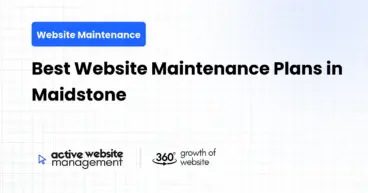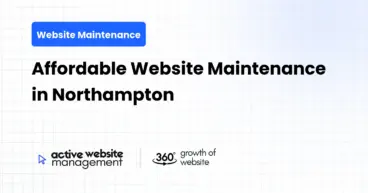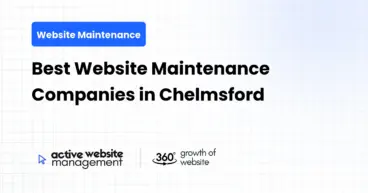December 12, 2024
5 min read
Managing a WordPress website effectively requires consistent effort and attention to detail. As a WordPress owner, your primary goal is to ensure your website remains functional, secure, and up-to-date while providing an excellent user experience. This article offers a comprehensive website care checklist for WordPress owners, covering everything from routine updates to active website management practices. By following these steps, you can maintain a healthy website that supports your goals.
1. Understanding the Importance of Website Care
A well-maintained website ensures seamless functionality, enhances user trust, and supports your business goals. Neglecting website care can lead to security vulnerabilities, poor performance, and a subpar user experience. Regular maintenance not only protects your investment but also ensures your website remains a valuable tool for your audience.
2. Routine Maintenance Tasks
Regular Updates
WordPress, themes, and plugins require regular updates to maintain compatibility and security. Keeping everything up-to-date reduces the risk of vulnerabilities.
- Core Updates: Always update WordPress to the latest version.
- Plugin Updates: Update plugins to access new features and patches.
- Theme Updates: Ensure your theme is updated to maintain design consistency and compatibility.
Don’t Just Maintain Your Website—
Grow It using Active Website Management! Don't Wait for Growth—Accelerate It with Active Website Management
Backup Strategy
Backups are crucial for safeguarding your data. Implement a reliable backup strategy to recover your website quickly in case of issues.
- Automated Backups: Use tools like UpdraftPlus or BackupBuddy to automate backups.
- Offsite Storage: Store backups on external platforms like Google Drive or Dropbox.
- Test Restores: Regularly test backups to ensure their reliability.
Security Monitoring
Protect your website from cyber threats by implementing robust security practices.
- Security Plugins: Use plugins like Wordfence or Sucuri for active monitoring.
- Firewall Protection: Set up a firewall to block malicious traffic.
- Login Protection: Limit login attempts to prevent brute force attacks.
Image Optimization
Large images can slow down your website. Optimize images to improve load times and user experience.
- Compression Tools: Use tools like TinyPNG or Smush for image compression.
- Responsive Images: Ensure images adjust to different screen sizes.
- Lazy Loading: Load images only when they appear in the viewport.
Caching and CDN Setup
Caching and Content Delivery Networks (CDNs) significantly enhance website speed.
- Caching Plugins: Install plugins like WP Rocket or W3 Total Cache.
- CDN Services: Use services like Cloudflare to deliver content faster to users worldwide.
Database Optimization
Over time, your database accumulates unnecessary data. Regular optimization keeps it lean and efficient.
- Database Cleanup: Remove spam comments, post revisions, and unused data.
- Optimization Plugins: Use tools like WP-Optimize for automated cleanup.
4. Content Management
Updating Content Regularly
Fresh content attracts visitors and improves your search engine ranking.
- Blog Posts: Publish informative articles regularly to engage your audience.
- Static Pages: Update pages like About Us and Services to reflect current information.
Fixing Broken Links
Broken links frustrate users and harm SEO.
- Link Monitoring Tools: Use plugins like Broken Link Checker to identify and fix broken links.
- Internal Linking: Create internal links to related posts.
Don't Wait for Growth—Accelerate It with
Active Website Management Don't Wait for Growth—Accelerate It with Active Website Management
5. SEO and Analytics
Search engine optimization (SEO) ensures your website ranks well on search engines.
- SEO Plugins: Install Yoast SEO or Rank Math to optimize on-page SEO.
- Keyword Analysis: Use tools like Google Keyword Planner to target relevant keywords.
Analyzing Website Traffic
Understand your audience by analyzing website traffic data.
- Analytics Tools: Set up Google Analytics to track visitor behavior.
- Performance Reports: Regularly review reports to identify trends and improve strategies.
6. Security Best Practices
Using Strong Passwords
Weak passwords are a common cause of security breaches. Use complex and unique passwords for all accounts.
- Password Generators: Use tools like LastPass or 1Password to generate and store strong passwords.
Two-Factor Authentication
Enhance login security by implementing two-factor authentication (2FA).
- Plugins for 2FA: Use plugins like Google Authenticator or Duo Security.
Malware Scanning
Regular malware scans detect and prevent malicious activities.
- Scanning Tools: Use tools like MalCare to perform thorough scans.
7. User Experience (UX) Enhancements
Mobile Optimization
With the majority of web traffic coming from mobile devices, optimizing for mobile is crucial.
- Responsive Design: Ensure your theme is mobile-friendly.
- Page Speed: Optimize for quick load times on mobile devices.
Improving Website Navigation
A clear and intuitive navigation structure enhances user experience.
- Menu Organization: Use logical categories and labels.
- Search Functionality: Include a search bar to help users find content easily.
8. Active Website Management
Active management ensures your website evolves with user needs and technological advancements.
Engage with your audience by moderating and responding to comments.
- Spam Control: Use Akismet to filter spam comments.
- User Engagement: Respond promptly to genuine comments.
Responding to User Feedback
Gather user feedback to identify areas for improvement.
- Feedback Forms: Use forms to collect user opinions.
- Surveys: Conduct surveys to gather detailed insights.
Regular Testing
Test your website periodically to identify and fix issues.
- Cross-Browser Testing: Ensure compatibility across different browsers.
- Functionality Testing: Check forms, buttons, and other interactive elements.
9. Advanced Care Tips
- Staging Sites: Use a staging environment to test updates before applying them to the live site.
- Custom Development: Invest in customizations to enhance functionality.
- Professional Services: Consider hiring experts for advanced optimization and management tasks.
10. Conclusion
Website care is an ongoing process that demands attention to detail and proactive management. By following this comprehensive checklist, WordPress owners can maintain a secure, fast, and user-friendly website.
Remember, an actively managed website not only ensures operational excellence but also supports your broader business objectives. Stay committed, and your efforts will undoubtedly pay off in the long run.






